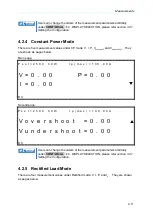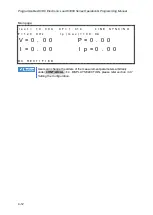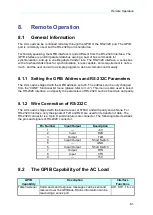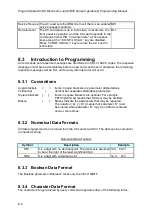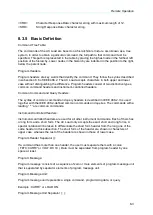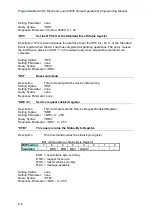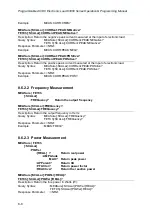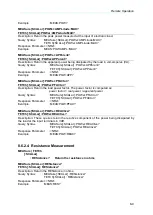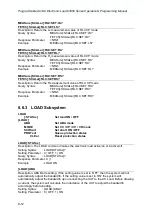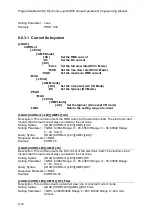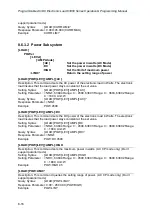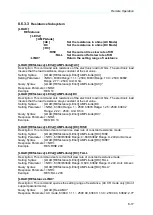
Programmable AC/DC Electronic Load 63800 Series Operation & Programming Manual
8-4
The separator (semicolon ;) separates the program message unit elements from one another
in a program message.
Example : CURR 20;CFAC 2<PMT>
Program Message Terminator (<PMT>):
A program message terminator represents the end of a program message. Three permitted
terminators are:
(1) <END> : end or identify (EOI)
(2) <NL> : new line which is a single ASCII-encoded byte 0A (10 decimals).
(3) <NL> <END> : new line with EOI.
Note: The response message is terminated by <NL> <END> for GPIB, and <NL> for
RS-232C.
Headers
VOLT
:
AMPL
Data
100 ; RANG HIGH ;
Root Specifier
: MEAS : CURR ? <NL>
Message Terminator
Head Separator
Message Unit Separators
Query Header
Figure 8-1 The Structure of Command Message
8.4
Traversal of the Command Tree
Multiple program message unit elements can be sent in a program message. The first
command is always referred to the root node. Subsequent commands are referred to the
same tree level as the previous command in a program message. A colon preceding a
program message unit changes the header path to the root level.
Example:
LOAD:CURR 10
All colons are header separators.
: LOAD:CURR 10
Only the first colon is a specific root.
LOAD:CURR 10; :CFAC 2.2 Only the third colon is a specific root.
8.5
Execution Order
The AC Load executes program messages by the order received. Program message units
except coupled commands are executed in order of reception. The execution of coupled
commands is deferred until program message terminator is received. A coupled command
sets parameters which are affected by the setting of other commands. Problems may arise,
because the prior state of the AC Load will affect the response of a coupled parameter to its
programming.




